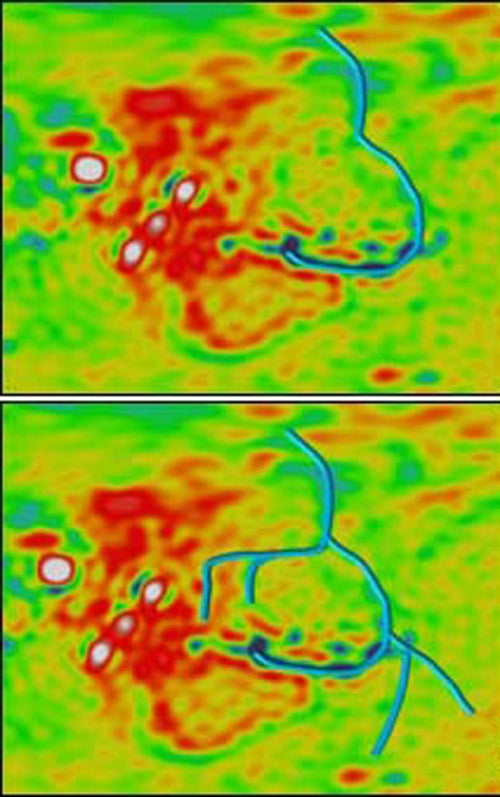Water may have played a role in shaping parts of the martian landscape a billion years longer than previous studies have shown, according to a research team led by Catherine Weitz, a senior scientist with the Planetary Science Institute.
Their research, to be published in Geophysical Research Letters presents strong evidence that sustained and large-scale processes associated with precipitation and flowing water likely occurred on the plains surrounding Valles Marineris during the Hesperian Epoch, 3 to 3.7 billion years ago. Valles Marineris is a huge canyon system that runs nearly a quarter of the way around the planet at its equator.
According to many studies, runoff from precipitation ceased by the end of the Noachian Epoch, which spanned the first billion years of martian history.
But after studying HiRISE images of light-toned layered deposits on the plains surrounding Valles Marineris, Weitz and her co-authors concluded that equatorial regions might have remained wet for a much longer period.
Scientists have studied the light-toned layered deposits inside Valles Marineris since the Mariner flybys in the early 1970s, but the HiRISE camera aboard the Mars Reconnaissance Orbiter has now given them an unparalleled, close-up view of the planet’s features. HiRISE can resolve objects as small as 3 feet in diameter.
Weitz was one of the first researchers to question whether the light-toned layered deposits on the plains surrounding Valles Marineris were different from those inside Valles Marineris. Two years ago, she began aiming the HiRISE camera to photograph these layered deposits.
“What we found was that these light-toned layered deposits on the plains are very different from those within Valles Marineris,” Weitz said. “There are a lot of variations in brightness, color, and erosion properties that we don’t see for light-toned deposits inside Valles Marineris. This suggests that the processes that created the deposits outside Valles Marineris were different from those operating inside.”
Weitz found light-toned layered deposits associated with valley systems and inverted channels in two locations near Valles Marineris. Inverted channels form on Earth when sediment is deposited in streambeds over time. When the streams dry up, the surrounding, softer terrain erodes, leaving the harder, cemented sediments in the former streambeds standing above the surrounding terrain.
Weitz and her colleagues also have found valley systems that probably were created by running water in two other areas of light-toned layered deposits adjacent to Valles Marineris.
All of these phenomena point toward what geologists call fluvial processes — those associated with running water.
In addition, the CRISM spectrometer, which is also on the Mars Reconnaissance Orbiter, identified minerals in the light-toned layered deposits that often form in the presence of liquid water on Earth.
However, other explanations for the layered deposits and mineralogy cannot be ruled out, Weitz said. These could involve explosive volcanism, wind deposition, and other geological processes.
“But the fact that these deposits are so distinct from other light-toned layered deposits in their characteristics and in their association with valleys and inverted channels suggests a fluvial origin,” she said.
“This was a big surprise because no one thought we’d be seeing these extensive fluvial systems in the plains all around Valles Marineris that were formed during the Hesperian Era,” Weitz said. “Everyone thought that by then the climate had pretty much dried out.”
“What we’re seeing tells us that this light-toned layering on the plains was associated with fluvial activity that wasn’t occurring just in little pockets over very brief episodes, but rather on a much larger scale for sustained time periods,” she added. “For some reason, there was precipitation around Valles Marineris that allowed these systems to form out on the plains.”










